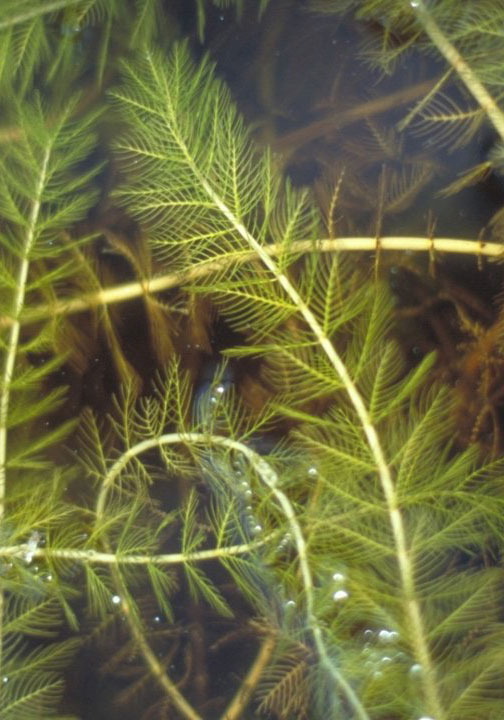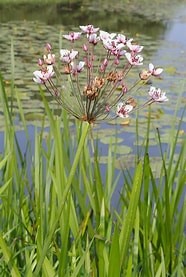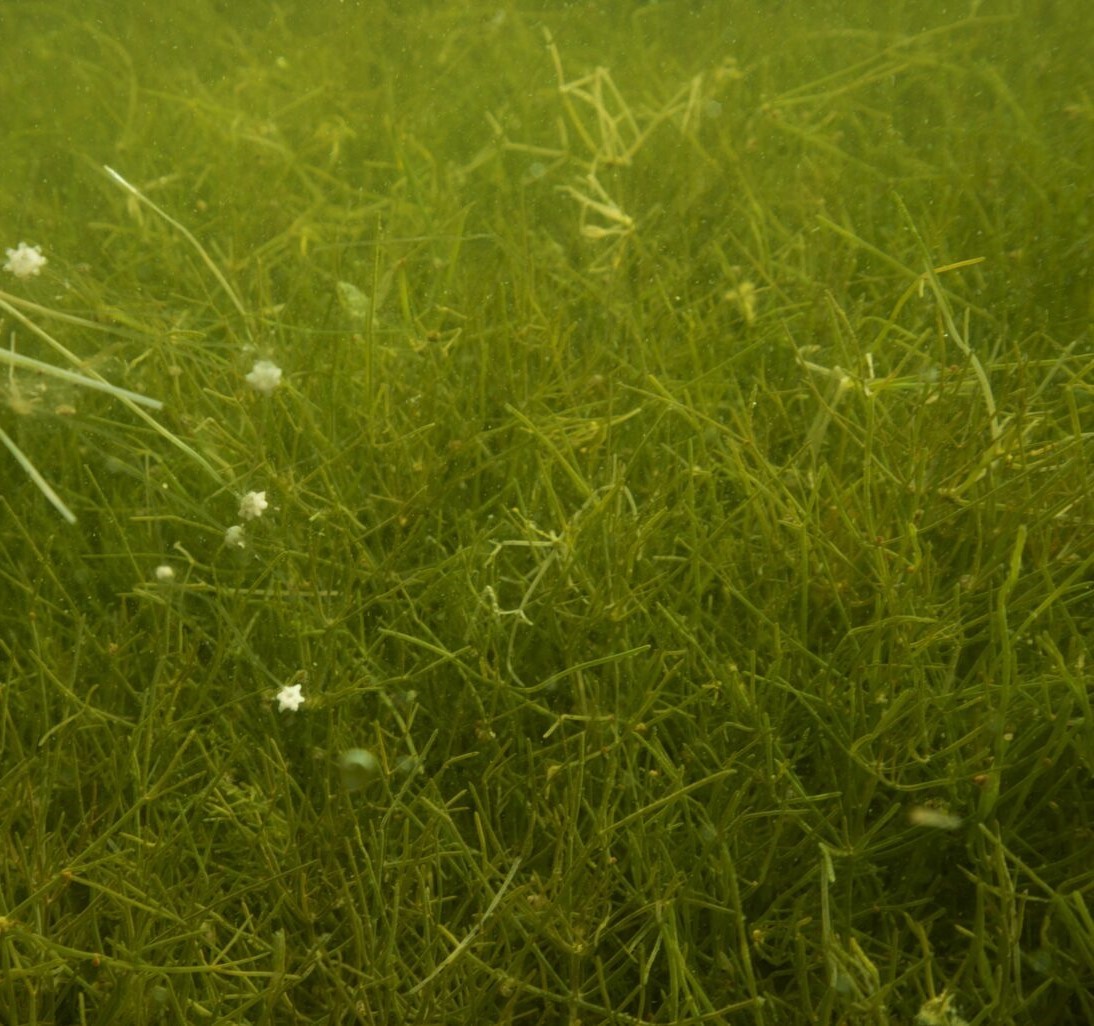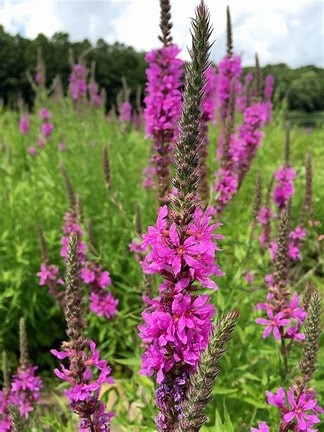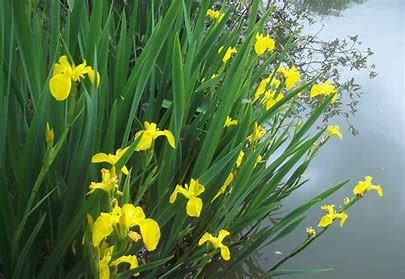Invasive Plants
Invasive Plants
Invasive species that live in our chain of lakes are:
These invasive aquatic weeds upset the natural balance in the lakes by crowding out native plants and fish habitat. They can grow extensively, making boating and swimming difficult.
‘Washtenaw County and Hamburg Township operate a weed control programs using chemicals and harvesting to reduce the invasive weeds’ impacts. The programs aim to improve recreation and protect native species, while following state and national regulations on chemical use. More information on the weed control programs can be found here.
We are fortunate that not all the invasive water species that are located in Michigan are found in our lakes. Invasive species move from lake to lake as a hitchhiker on water craft, water toys, and fishing paraphernalia. Before entering our waters be sure that you have cleaned anything that will come in contact with our waters to avoid introducing any new invasives. After boating, be sure to clean and dry everything that comes in contact with our waters to avoid moving invasive species to other bodies of water.
Ways to Help:
- Thoroughly wash and examine your watercraft
- Briefly start your engine to blow all the water out of the cooling system before backing down to the ramp
- Rinse and dry your boat to make sure all possible “hitchhikers” have been eliminated
- Vigorously rub down your hull and exposed motor surfaces with a rough towel
- Drain your boat’s live wells and dry them out
- Never transfer drawn water from any other lake into our lakes—this includes bait buckets containing water from bait shops, water skis, and even scuba equipment
- When planting on your property consider using native plants and avoid using plants that have invasive tendencies. Plant experts at most nurseries can advise you.
Photo Credit: Karevich
Water-Based Invasive Plants
Eurasian Watermilfoil
Eurasian watermilfoil is an invasive aquatic plant that forms dense mats on the surface of lakes and rivers that crowd out native plants, impact water quality, and interfere with recreational uses of water bodies. It has feathery leaves arranged in whorls of 3-4 along branching stems that can grow over 10 feet long. The plant invades disturbed, polluted water areas where native plants cannot thrive.
Harvesting Eurasian watermilfoil is difficult because it spreads primarily through stem fragments and rhizomes rather than seeds.
More information is here: Eurasian Watermilfoil | National Invasive Species Information Center
And here Plant Conservation Alliance
Flowering Rush
Don’t be fooled by the attractive flower of Flowering Rush that may appear magically on your shoreline. This plant can grow densely along shorelands making it difficult to access the water, crowding-out native plants while not providing shelter, food or nesting sites for native animals.
Flowering Rush is really only identifiable when it is in bloom. At other times it can be mistaken for native plants that should not be disturbed. Small stands of Flowering Rush can be carefully dug up and removed from shorelands. Be careful to remove the complete plant with all its root nodules and to avoid releasing any segments into the water. If you suspect Flowering Rush located below the high water mark notify for Little Portage through Whitewoods Lakes notify Washtenaw County here. For Gallagher through Zukey Lakes notify Hamburg Township at [email protected].
More information is here: Flowering Rush: (msu.edu)
Starry Stonewort
Starry Stonewort is a bushy, bright green macro-algae – a large, plant-like form of algae with star-shaped bulbils (underwater flowers). Like other algae, it feeds off the nutrients (phosphorous) in the water. Locally, it grows mainly in July and August, with continued growth until September. It is an annual that dies back over the winter.
Starry Stonewort:
Grows in dense mats at the water’s surface inhibit waterways and clog boat propellers.
Overtakes habitat and outcompetes native aquatic plants, potentially lowering diversity.
Provides unsuitable shelter, food, and nesting habitat for native fish and wildlife.
Smothers fish spawning habitat.
Each year, the local weed control programs harvest large matts of Starry Stonewort. Currently, there are no known herbicides that will kill Starry Stonewort.
More information is here: Starry Stonewort – An Invasive Species We Need To Watch
Wetland Invasive Plants
Wetlands play a vital role in maintaining water quality in inland lakes. As water moves through wetlands, the plants and soils act as natural filters, trapping excess nutrients, sediments, and contaminants that would otherwise flow into lakes. This helps keep lake water clean. Wetlands also absorb heavy metals, pesticides, and other pollutants, protecting lakes from excessive nutrient loads that lead to algal blooms and oxygen depletion. Additionally, wetlands recharge groundwater supplies that feed lakes and streams. They provide flood control by absorbing excessive stormwater. Wetlands are able to improve water clarity, which allows aquatic plants to flourish, enhancing fisheries habitat. Destroying wetlands removes these natural purification processes and degrades lake water quality. That’s why preserving and restoring wetlands along inland lakes is crucial for protecting water quality, wildlife habitats, and recreational resources.
Invasive plants make wetlands less effective at protecting our lakes by replacing native plants, especially cattails, that are very effective at cleaning the water as it flows through the wetlands to our lakes. Invasives have started to establish themselves in our wetlands. At this point in time, there is not program to fight them.
The most important thing that we can do at this time, is to avoid planting these species in our gardens.
Giant Common Reed (Phragmites)
Phragmites is an invasive wetland plant that spreads aggressively in Michigan waters. It grows over 15 feet tall and forms dense stands that crowd out native plants. Phragmites spreads through seeds, rhizomes, and plant fragments. It is adaptable and can thrive in poor environmental conditions. Thick stands impact recreation, access, views, wildlife habitats and increase fire risk. Phragmites is very difficult to control once established, poses an ecological threat, and continues to spread through Michigan’s wetlands.
More Information Here: Invasive Plants We Study: Phragmites | U.S. Geological Survey
Invasive Phragmites Science: Great Lakes Phragmites Collaborative | U.S. Geological Survey
Purple Loosestrife
Purple loosestrife is a tall, flowering European wetland plant that grows aggressively and has no natural predators here, allowing it to spread rapidly without control. The appealing flowers lead some gardeners to unknowingly spread it further. Each plant produces up to half a million hardy seeds per year. With no enemies, loosestrife overtakes wetlands, crowding out native plants and altering habitats. Though beautiful, purple loosestrife is an invasive environmental threat that continues to spread through seed distribution and lack of targeted control efforts.
Purple loosestrife overtakes wetland areas, forming dense stands that crowd out cattails and other native plants important for wildlife food and habitat. The widespread carpets of loosestrife completely transform marsh ecosystems. All forms of purple loosestrife should be avoided. The aggressive nature and reproductive capacity of this invasive plant allow it to rapidly displace native species, to the great detriment of natural wetland environments. Preventing further spread is key.
Home gardeners should not purchase or plant purple loosestrife, even advertised sterile cultivars, as they still cross-pollinate and spread. Check seed labels carefully. Remove and safely dispose of existing plants through burning, landfilling, or as a last resort, targeted herbicide use. Prevention and removal are key for local efforts to curb the spread of problematic purple loosestrife in natural habitats.
More Information Here: Purple Loosestrife – Invasive
And Here: Purple Loosestrife – Invasive (michigan.gov)
Yellow Flag Iris
Yellow flag iris is a beautiful invasive. Its bright yellow flowers make it a welcome garden plant, BUT when it grows at the edge of our lakes and river, it can create dense stands, outcompeting other plants that provide food and habitat for wildlife. All parts of yellow iris are toxic. Resin from its roots and leaves can cause skin irritation and blistering. If eaten, it will cause gastric distress in both humans and animals.
It is possible to remove small stands by carefully digging up the complete root system and being careful not to spread its seeds, that float easily to establish new plants elsewhere. It has been banned in some areas but is still widely sold in others for use in gardens, so be careful not to help this plant grow near the shore.
Instead, plant blue flag iris, a native plant that thrives along the shore and supports wildlife.
More information here: Yellow Flag Iris (cornell.edu)
Instead of yellow flag iris you can plant blue flag iris – a similar plant that is native to Michigan. Blue Flag Iris Information


